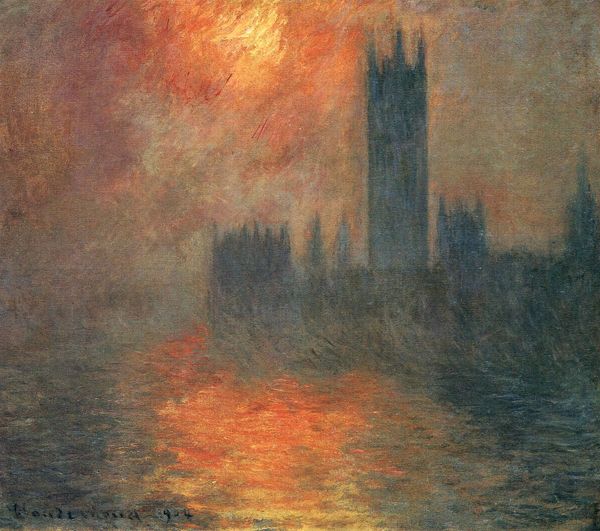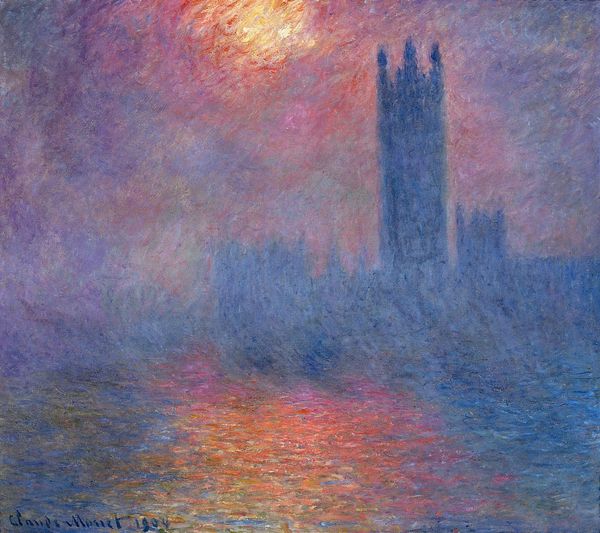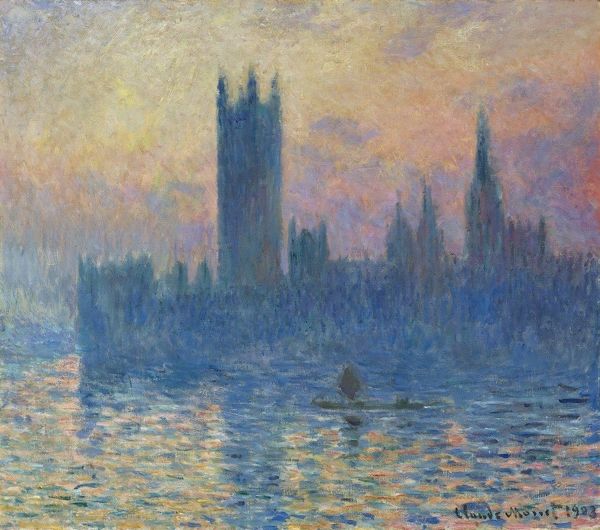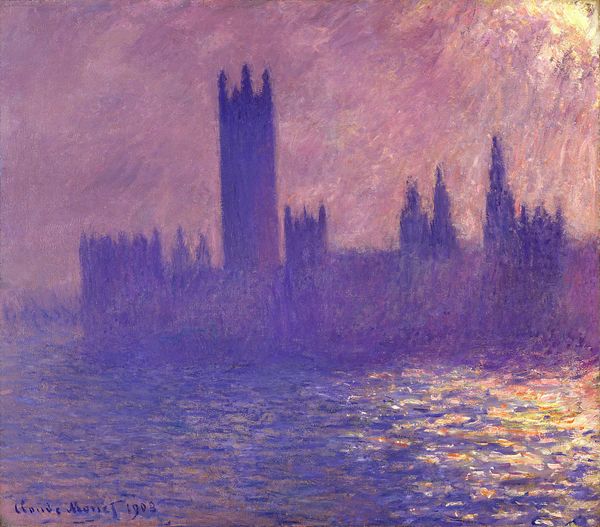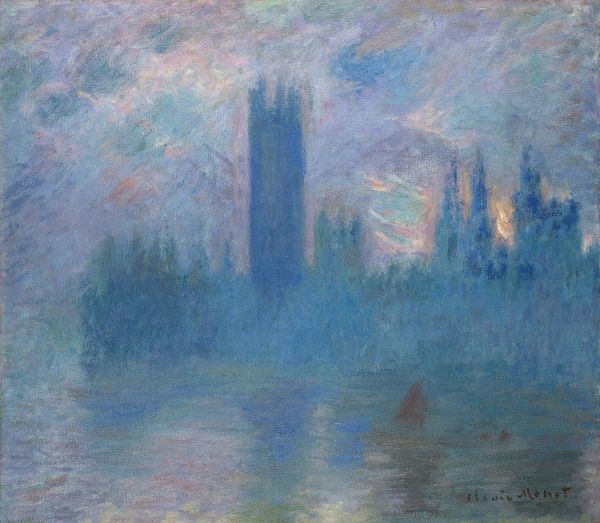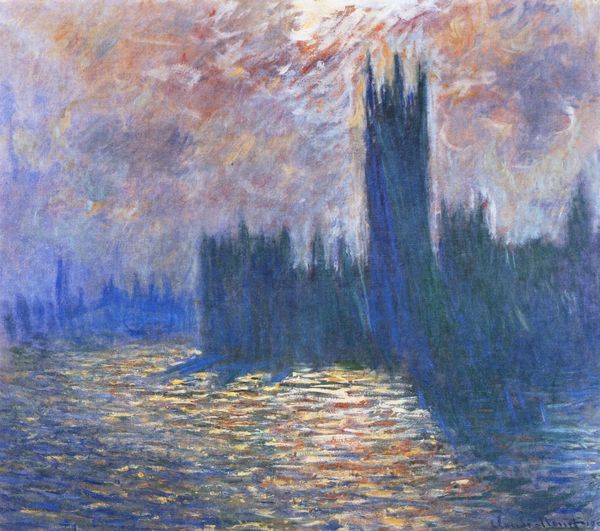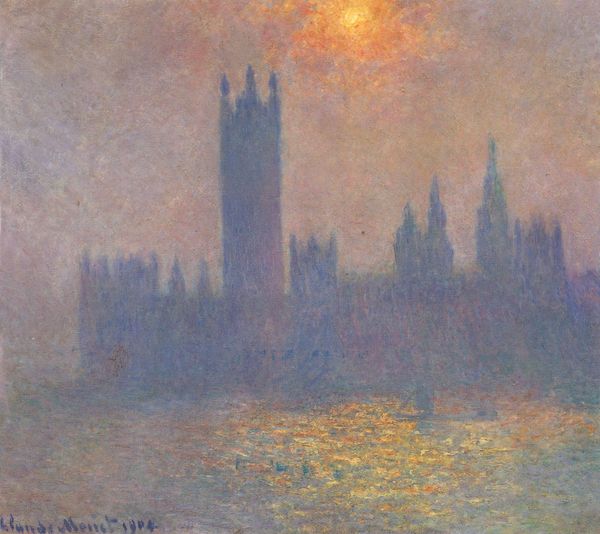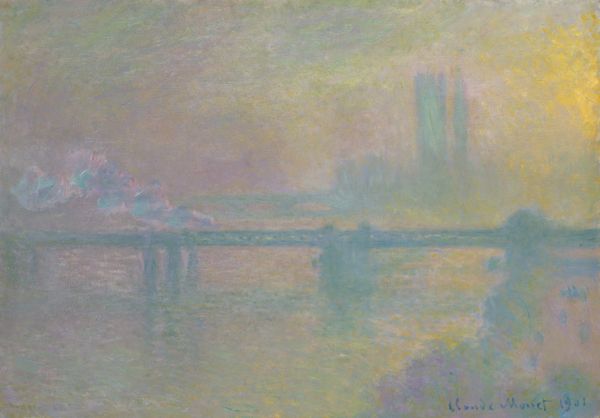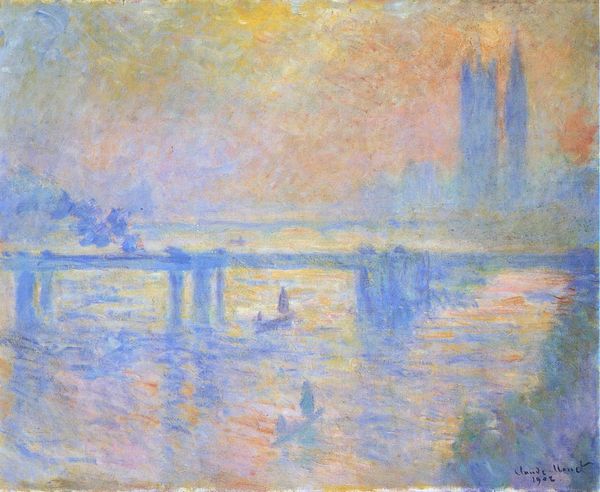
Copyright: Public domain
Curator: Today we're observing Claude Monet's "Houses of Parliament, Fog Effect," painted in 1903. Editor: It’s immediately dreamlike, wouldn’t you say? A veiled monument rendered in softened light and obscured detail. Almost ethereal. Curator: Indeed. The Houses of Parliament are a potent symbol of British governance and power. However, Monet doesn't present them in their full, imposing grandeur. The fog seems to dematerialize its significance, to make them elusive. This series resonates with a fascination for ephemeral atmospheric conditions, transforming even the most steadfast structures into fleeting mirages. Editor: Absolutely. It’s about vaporizing the immutable. I see the canvas, the brushstrokes, the layered oil paint building up the atmosphere as much as the image itself. The fog isn't just depicted, it's built with texture and pigment. This impressionistic approach isn’t just about capturing a scene but showing the *making* of the scene. Think about the sheer industrial processes needed for those pigments back then too, what’s visible here is only the final part of the social process that constitutes a painting like this. Curator: And I would also like to focus on how it engages with collective memory. For the French, London was always wrapped in fog and stories; this work touches upon this deep symbolic meaning through Monet’s work with the atmosphere and its concealing effect. Monet provides us with what it *feels* like to remember London, obscured yet omnipresent, familiar and unreachable. Editor: The fog, or smog actually, brings up the industrial context too. It wasn't just nature; it was a byproduct of intense coal burning, inextricably linked to labor and the economic engine of London. So that “impression” contains layers of soot, really. The materiality of industry shaping even what we *see*. Curator: Yes, it shows how a fleeting optical effect can become intertwined with national and personal identities, becoming something permanent beyond that moment in time. It shows not only history but its spectral echoes. Editor: It is this kind of interplay that exposes both art and social structures to change; to see paintings not just as standalone aesthetic items but material echoes of production that is, itself, social and historical. Thank you for walking us through this analysis, what an intriguing view!
Comments
No comments
Be the first to comment and join the conversation on the ultimate creative platform.

